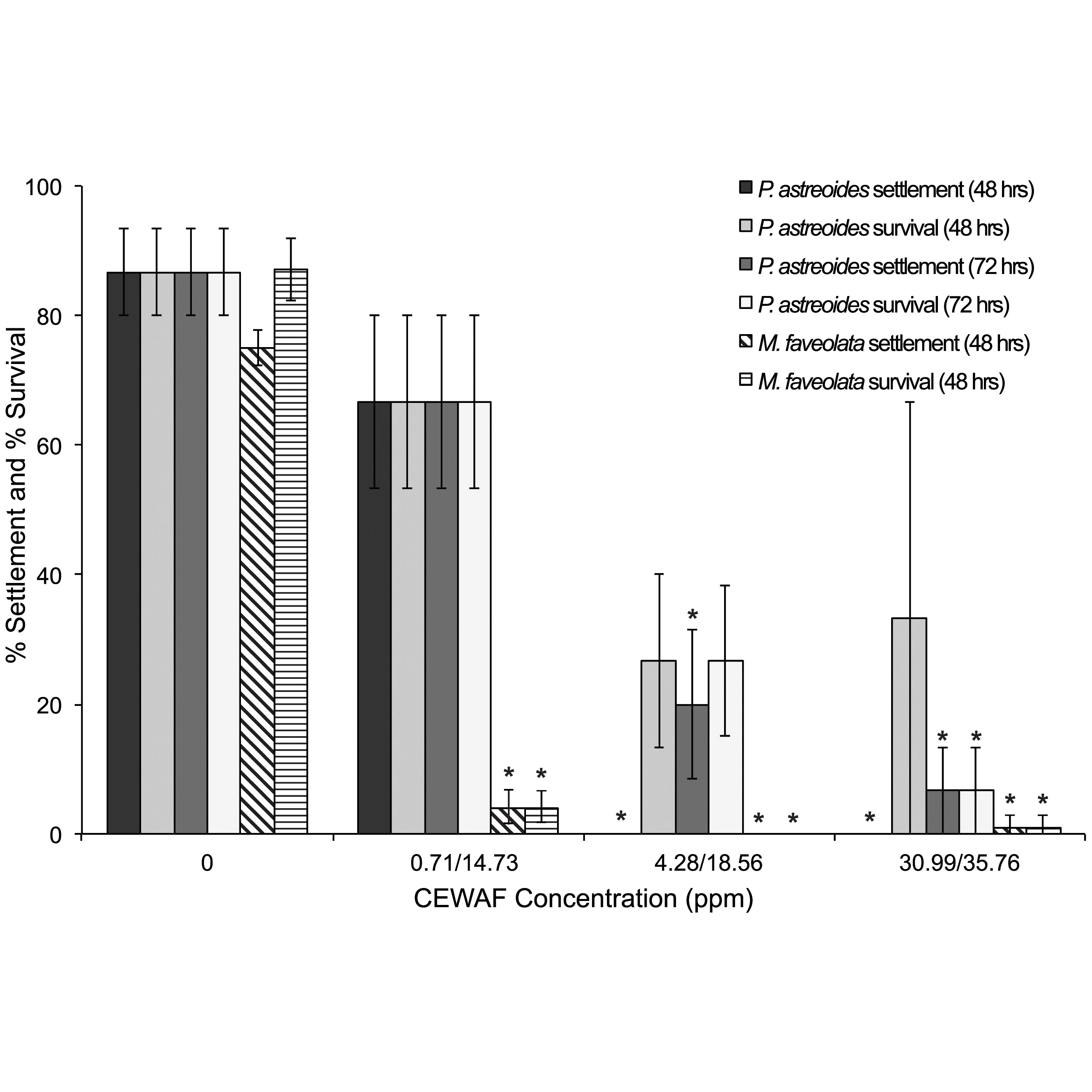
Toxicity of DwH Oil and Corexit 9500 to Coral Larvae
Abstract
Acute catastrophic events can cause significant damage to marine environments in a short time period and may have devastating long-term impacts. In April 2010 the BP-operated Deepwater Horizon (DWH) offshore oil rig exploded, releasing an estimated 760 million liters of crude oil into the Gulf of Mexico. This study examines the potential effects of oil spill exposure on coral larvae of the Florida Keys. Larvae of the brooding coral, Porites astreoides, and the broadcast spawning coral, Montastraea faveolata, were exposed to multiple concentrations of BP Horizon source oil (crude, weathered and WAF), oil in combination with the dispersant Corexit® 9500 (CEWAF), and dispersant alone, and analyzed for behavior, settlement, and survival. Settlement and survival of P. astreoides and M. faveolata larvae decreased with increasing concentrations of WAF, CEWAF and Corexit® 9500, however the degree of the response varied by species and solution. P. astreoides larvae experienced decreased settlement and survival following exposure to 0.62 ppm source oil, while M. faveolata larvae were negatively impacted by 0.65, 1.34 and 1.5 ppm, suggesting that P. astreoides larvae may be more tolerant to WAF exposure than M. faveolata larvae. Exposure to medium and high concentrations of CEWAF (4.28/18.56 and 30.99/35.76 ppm) and dispersant Corexit® 9500 (50 and 100 ppm), significantly decreased larval settlement and survival for both species. Furthermore, exposure to Corexit® 9500 resulted in settlement failure and complete larval mortality after exposure to 50 and 100 ppm for M. faveolata and 100 ppm for P. astreoides. These results indicate that exposure of coral larvae to oil spill related contaminants, particularly the dispersant Corexit® 9500, has the potential to negatively impact coral settlement and survival, thereby affecting the resilience and recovery of coral reefs following exposure to oil and dispersants.


